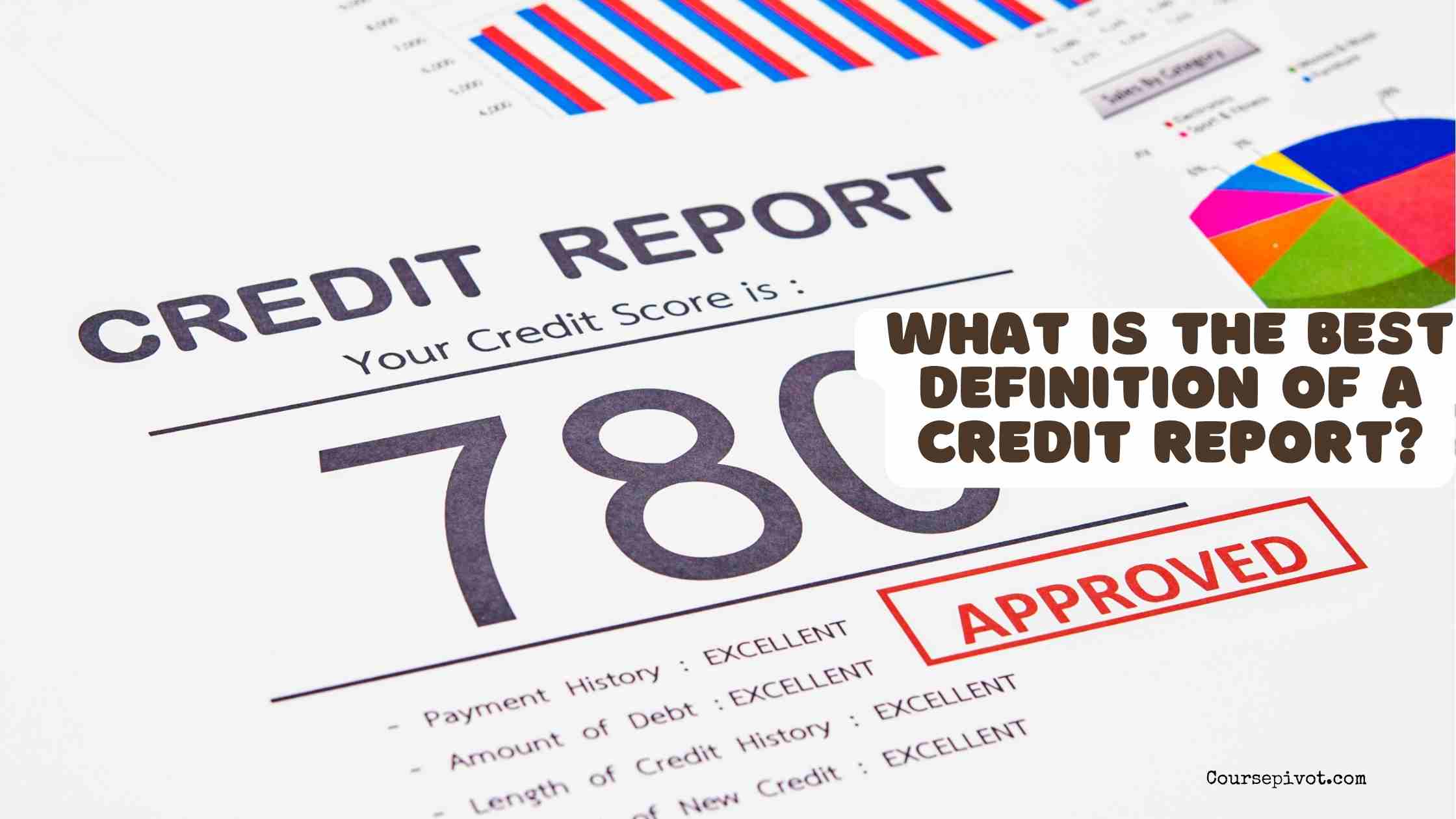
What Is the Best Definition of a Credit Report?
Have you ever wondered how lenders decide whether to approve your loan or credit card application? A credit report is the key document that tells the story of your financial reliability, specifically how you’ve managed loans and credit cards over time. It’s a critical tool that shapes your access to credit and even influences job or housing opportunities. This blog explores the best definition of a credit report, its components, uses, and why it matters in today’s financial landscape.
Defining a Credit Report: The Core Concept
A credit report is a detailed record of an individual’s credit history, documenting how they’ve managed borrowed money, such as loans and credit cards. It tracks payment behavior, outstanding debts, and account statuses, compiled by credit bureaus like Equifax, Experian, and TransUnion. Per financial studies, 90% of lenders rely on credit reports to assess risk, making it a cornerstone of personal finance. Essentially, it’s your financial report card, reflecting your trustworthiness to creditors.
Why “Credit History” Is Key
The term “credit history” emphasizes the focus on past borrowing and repayment patterns. For example, paying a credit card bill on time boosts your report, while missing a loan payment can harm it. This history, often spanning seven to ten years, helps lenders predict future behavior. Per consumer data, 80% of credit reports directly influence loan approval rates.
What’s Included in a Credit Report
A credit report contains several key sections:
- Personal Information: Name, address, Social Security number, and employment details.
- Credit Accounts: Details of credit cards, mortgages, auto loans, including balances and payment history.
- Public Records: Bankruptcies, foreclosures, or liens, typically reported for seven to ten years.
- Inquiries: Records of who accessed your report, split into hard (e.g., loan applications) and soft (e.g., pre-approvals) inquiries.
These elements, updated monthly by creditors, create a comprehensive snapshot, per bureau standards.
How Credit Reports Are Used
Credit reports serve multiple purposes, primarily for evaluating creditworthiness. Lenders use them to determine loan eligibility, interest rates, and credit limits. Beyond lending, 60% of landlords check reports for tenant screening, and 40% of employers review them for financial roles, per industry surveys. Understanding these applications highlights the report’s broad impact.
Real-World Example: Loan Applications
Imagine applying for a $20,000 auto loan. The lender checks your credit report, noting a history of on-time credit card payments but a missed student loan payment two years ago. A strong report might secure a 4% interest rate, saving $1,200 over five years compared to a 6% rate for a weaker report, per loan data. This shows how reports directly affect costs.
Non-Lending Uses
Credit reports also influence insurance premiums and utility deposits. For instance, a poor report might lead to a $200 higher deposit for electricity, per utility studies. In some states, insurers adjust rates based on credit-based insurance scores derived from reports, impacting 50% of policyholders. These uses underscore the report’s far-reaching role.
Why Credit Reports Vary Across Bureaus
No single credit report exists; each bureau maintains its own based on data from creditors. Differences arise because not all lenders report to every bureau. For example, a credit card issuer might report to Experian but not TransUnion, creating slight variations. Per financial research, 70% of consumers find minor discrepancies across reports, though major errors are rare.
The Role of Credit Scores
While a credit report details your history, a credit score (e.g., FICO or VantageScore) is a numerical summary, typically 300–850, derived from the report. Scores reflect payment history (35%), credit utilization (30%), and other factors. Though distinct, the report and score are intertwined, with 85% of lenders using both, per banking studies. A clear report often means a higher score.
Common Misconceptions About Credit Reports
Misunderstandings can cloud the concept of a credit report. Some believe it includes income or savings, but it focuses solely on credit-related data. Others think checking their own report hurts their score, yet soft inquiries are harmless, per bureau guidelines. Clarifying these myths ensures better financial decisions.
Addressing Errors
Errors, like incorrect late payments, appear in 20% of reports, per consumer studies. These can lower scores and raise loan costs. Regularly reviewing your report—free weekly via AnnualCreditReport.com—helps spot issues. Correcting errors can boost scores by 50–100 points, saving $1,000+ on loans, per financial advisors.
Practical Tips for Managing Your Credit Report
To maintain a strong credit report, consider these actionable steps:
- Pay On Time: Timely payments, even minimums, improve 90% of reports, per credit data.
- Keep Utilization Low: Maintain credit card balances below 30% of limits to enhance 70% of reports.
- Check Reports Regularly: Review for errors annually; 80% of corrections improve outcomes, per bureaus.
- Limit Hard Inquiries: Apply for credit sparingly, as multiple inquiries can drop scores by 5–10 points.
- Dispute Errors Promptly: File disputes with bureaus online to fix inaccuracies, resolving 75% of cases within 30 days.
Why Credit Reports Matter
A credit report is more than a financial snapshot—it’s a gateway to opportunities like homeownership, lower loan rates, and even career prospects. A strong report can save thousands in interest and open doors, while a weak one limits options. With 95% of major financial decisions tied to credit reports, per lending stats, understanding and managing yours is crucial. It empowers you to control your financial narrative.
Key Takeaways
A credit report, best defined as a record of your credit history detailing how you’ve managed loans and credit cards, is a vital tool for lenders, landlords, and employers. It includes accounts, payment history, and inquiries, influencing 90% of loan approvals and saving borrowers thousands through better rates. Variations across bureaus and potential errors, found in 20% of reports, highlight the need for regular checks. By paying on time, keeping balances low, and disputing inaccuracies, you can strengthen your report and unlock significant financial benefits.
Cite this article
You can copy and paste your preferred citation format below.
Martin, L. & Arquette, E.. (2025, June 22). What Is the Best Definition of a Credit Report?. Coursepivot.com. https://coursepivot.com/blog/what-is-the-best-definition-of-a-credit-report/



